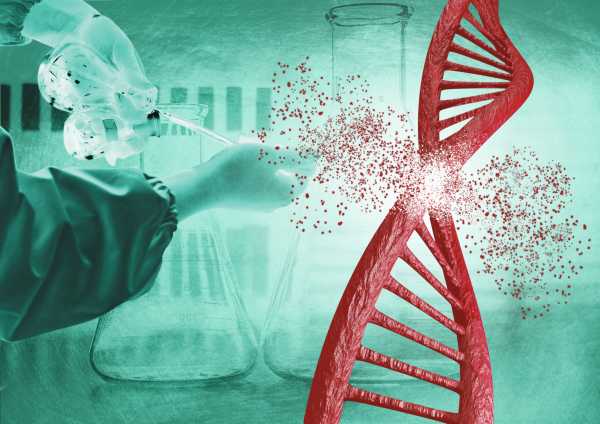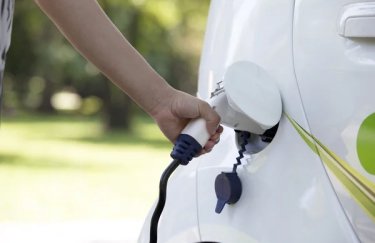
This story is part of a group of stories called

Finding the best ways to do good. Made possible by The Rockefeller Foundation.
California wants to make it clear that tinkering with your own genes is a “don’t try this at home” sort of thing.
The state is making it illegal to sell a do-it-yourself genetic engineering kit unless it comes with a clear warning stating that “the kit is not for self-administration.” This is a notable escalation of an effort to regulate biohacking, a movement that’s gotten people interested in hacking their genomes — although it bears noting that right now, nobody appears to actually be selling the sort of kit California prohibits.
The bill containing the prohibition was authored by Republican state Sen. Ling Ling Chang and signed by Democratic Gov. Gavin Newsom on July 30. In January, it’ll become law. Chang says it’s the first US law to explicitly address the gene-editing technology CRISPR.
“I’m proud to announce the Governor signed my bill addressing human biohacking,” she posted on Facebook last week. “CRISPR is becoming widely available, but many in the scientific community have sounded the alarm that it could have negative consequences outside professional labs. This first ever legislation addressing emerging CRISPR technology will help prevent safety mishaps by amateur users of CRISPR kits.”
The term “biohacking” can cover a huge range of activities, from performing science experiments on yeast, to actually changing your biology by implanting computer chips into your limbs, taking nootropics or “smart drugs,” giving yourself a fecal transplant, pumping a younger person’s blood into your veins in the hope that it’ll fight aging, and more. The type of biohackers currently gaining the most notoriety are the ones who experiment on their bodies with the hope of “upgrading” or “optimizing” their physical and cognitive performance.
Existing regulations weren’t built to make sense of something like biohacking, which in some cases involves risky procedures and stretches the very limits of what it means to be a human being. That means that a lot of biohacking pursuits exist in a legal gray zone: frowned upon by bodies like the FDA, but not yet outright illegal, or not enforced as such. As biohackers traverse uncharted territory, regulators are scrambling to catch up with them.
California’s new law is a sign that some people are becoming increasingly nervous about the biohacking community and are trying to neutralize the perceived danger to public health with more regulation.
Why is this happening in California?
Silicon Valley is where biohacking really took off. It’s home to several of its famous proponents, like Twitter CEO Jack Dorsey. It’s also home to a mentality that is uniquely well-suited to biohackers, whose underlying philosophy is that we don’t need to accept our bodies’ shortcomings — we can engineer our way past them using technology.
As millionaire Serge Faguet, who plans to use biohacking techniques to live forever, put it: “People here [in Silicon Valley] have a technical mindset, so they think of everything as an engineering problem. A lot of people who are not of a technical mindset assume that, ‘Hey, people have always been dying,’ but I think there’s going to be a greater level of awareness [of biohacking] once results start to happen.”
One of the most notorious biohackers, Josiah Zayner, lives in California, where he’s currently under investigation after being accused of practicing medicine without a license. He runs a company called the Odin out of his garage in Oakland, selling biohacking supplies ranging from $20 DNA to a $1,849 DIY genetic engineering kit. In 2017, he injected himself with CRISPR DNA at a biotech conference, live-streaming the stunt. That same year, he started selling a CRISPR kit to target a human gene, the removal of which could theoretically make muscles bigger.
The FDA soon released a notice saying the sale of DIY gene-editing kits for use on humans is against the law. Zayner disregarded the warning and continued to sell his wares. But after getting emails from customers inquiring about how to inject themselves, and after worrying aloud that “people are going to get hurt” because “everybody is trying to one-up each other more and more,” he stopped selling the product this year.
As of now, it doesn’t seem anyone is actually selling the type of DIY CRISPR kit Chang is concerned about — a kit that would work on human genes as opposed to, say, yeast. So why is California passing legislation to crack down on a problem that doesn’t yet appear to exist?
“It’s obviously targeting me,” Zayner told MIT Tech Review, which noted that Chang’s staff has indeed pointed to his products in particular as worrisome. “It’s like, California, people try to find new technology to regulate, make a name, and say, ‘Hey, California is ahead of everyone else.’ To me the law is silly.”
Politicians like Chang see it differently: They want to be proactive about regulating a technology that could pose a danger to public health if amateurs, egged on by stunts like Zayner’s, use it irresponsibly.
The debate over whether — and how — biohacking should be regulated
Many biohackers say restrictive regulation would be a counterproductive response to biohacking because it’ll just drive the practice underground. They say it’s better to encourage a culture of transparency so that people can ask questions about how to do something safely, without fear of reprisal.
Ellen Jorgensen is a molecular biologist who co-founded Genspace and Biotech Without Borders, two Brooklyn-based biology labs open to the public. She says most biohackers are safety-conscious, not the sorts of people interested in engineering a pandemic. They’ve even generated and adopted a codes of ethics. She herself has had a working relationship with law enforcement since the early 2000s.
“At the beginning of the DIY bio movement, we did an awful lot of work with Homeland Security,” she said. “And as far back as 2009, the FBI was reaching out to the DIY community to try to build bridges.”
Rob Carlson, an expert on synthetic biology who’s been advocating for biohacking since the early 2000s, told me he’s noticed two general shifts over the past 20 years. “One was after 2001, after the anthrax attacks, when Washington, DC, lost their damn minds and just went into a reactive mode and tried to shut everything down,” he said. “As of 2004 or 2005, the FBI was arresting people for doing biology in their homes.”
Then in 2009, the National Security Council dramatically changed perspectives. It published the National Strategy for Countering Biological Threats, which embraced “innovation and open access to the insights and materials needed to advance individual initiatives,” including in “private laboratories in basements and garages.”
Now, though, politicians like Chang and agencies like the FDA seem to think they ought to take action. In February, the FDA released a statement urging people to stay away from young blood transfusions. In June, it put a stop to clinical trials on fecal transplants after two people contracted serious infections from such transplants and one of them died.
But even if there were clear regulations governing all biohacking activities, there would be no straightforward way to stop people from pursuing them behind closed doors. “This technology is available and implementable anywhere, there’s no physical means to control access to it, so what would regulating that mean?” Carlson said.
Chang is stopping short of trying to restrict access, instead opting to warn consumers of the risks. The text of California’s new CRISPR law reads, in part, as follows:
It’s unclear how much good this law will do, if and when a CRISPR kit that targets human genes reappears on the market. Biohackers who are determined to “optimize” or “upgrade” their bodies may be unlikely to be dissuaded by a warning label. What is clear is that some lawmakers are getting nervous about biohacking, and they think more regulation is the answer.
For people like Jorgensen, that’s a shame, and she pins the blame for increased scrutiny on celebrity biohackers like Zayner. She said his stunts give biohackers like her a bad name. “It’s bad for the DIY bio community,” she said, “because it makes people feel that as a general rule we’re irresponsible.”
Sign up for the Future Perfect newsletter. Twice a week, you’ll get a roundup of ideas and solutions for tackling our biggest challenges: improving public health, decreasing human and animal suffering, easing catastrophic risks, and — to put it simply — getting better at doing good.
Sourse: vox.com






